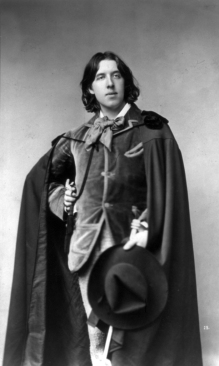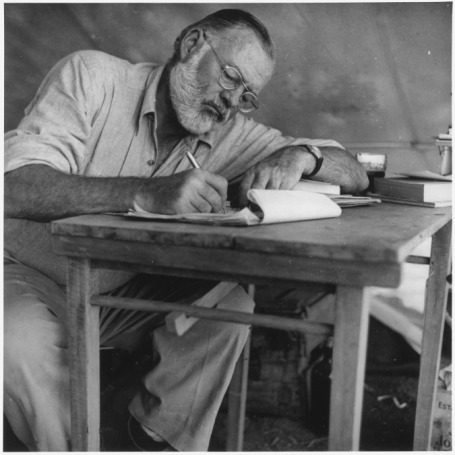
If you follow me anywhere, you’ve probably been blasted with news of Monsters at Dusk. Yep, it’s officially out and available for purchase.
If you’ve already bought the book, thank you. This post will hopefully add to your enjoyment of the stories. If you haven’t yet purchased it, perhaps this post will pique your interest.
Here’s some insider info on each of the 10 stories in Monsters at Dusk. No spoilers for those who haven’t read them just yet.
Several Messages from Abby to God (Regarding Her Cat)
Every weekday morning, I wake up and write. Most days I plan what I’ll write. Some days, I don’t. For the latter, I wander around the page. I discovered this story while wandering one morning.
This story was inspired by a feeling I think many people experience: that of a beloved pet dying. For some, especially children, their favorite dog or cat passing is their first run-in with death. Furthermore, it’s difficult to reconcile belief in a loving God when that God has ostensibly just snatched your best friend away.
That’s where it started, though it changed a lot in the telling. After submitting a completed draft to my writer’s group, my fellow writers asked for a stronger ending. Therefore, I spent a great deal of time refining both the middle and end. I’m hoping I achieved a sense of rising tension feeding into a satisfying conclusion, all without losing the humor the piece carries throughout.
The epistolary style was super fun to write. The short, pithy letters in which characters relay information to one another is modeled after Pierre Choderlos de Laclos’s Dangerous Liaisons. Except instead of feuding nobles, this one’s about God, Satan, a kid, and a cat.
Also, if you read my first book, Gerald Barkley Rocks, you might notice some feline overlaps here and there. Hope I’m not going overboard with the cats…
Unbelievable
“Unbelievable” first appeared in the January 2017 issue of Chantwood Magazine. It began with two characters arguing in a car. The theme (and therefore, the title) only revealed themselves as I wrote.
This spontaneity actually works quite well for the piece, I think. After re-reading it, it feels like the characters get a definite sense of, “What the hell is going on?” And any story where I get to poke fun at skinny jeans is a good story, in my book.
We Remember
This is likely the most personal piece in the collection (and also the most depressing). I tried to imagine what it would be like to lose all memory of my wife. Not fun, but I think it made for a moving story.
The entwined theme of water and memory came from an article I thought I read when I was a kid (though I’ve had trouble finding it since). As I remember, the article’s author posited that memory is actually a liquid chemical within the brain, and that it’s pumped whenever we need to recall anything. When we forget, it’s because that liquid memory has evaporated.
I always thought that was an interesting theory, so I played with it symbolically in “We Remember.” What if there was a monster that lived off those memories? Thankfully, I made up enough water metaphors to fill a 3,000-word story. Hopefully not too many, though.
Large Coffee, Black
If I don’t know what I’m going to write in the morning, I look for inspiration from my surroundings. In the morning, I’m usually surrounded by two things: cats and coffee. I write about the former often enough. Now for the latter.
The monster here is metaphorical. Perhaps it’s our main character, perhaps it’s his obsession, perhaps it’s our titular beverage itself. It might even be love, which is a pleasantly surprising subtheme I stumbled upon somewhere in my later drafts. Whatever it is, I think it’s more fun if I let the reader decide. Your call.
A Good Fit in Penbluff City
As I’m sure you can tell, this story is a smaller slice from a larger pie. I intend on returning to this world, sooner rather than later.
I’ve followed professional sports all my life. The thing I love most about them: stories. Each season brings heroes and villains, ripe conflicts, betrayals, moments of heroism, and victories against the odds. Furthermore, there’s the business aspect, a world which we catch only minor glimpses of here and there. With this story, I’m bringing that business side of sports to epic fantasy.
I don’t normally care for this style of pitch, but I’d describe this world as Moneyball meets The Lord of the Rings. It was fun writing, and I look forward to more of it in the future.
Alice
Funny story behind this one. It was originally entitled “David” and it’s one of the oldest stories in this collection (circa 2014). And, once upon a time, it was also accepted for publication.
This was around 2015. A magazine called Lakeside Circus gave “David” the green light. Yet then several months passed without further updates. I emailed a couple times to check the status, but still no word. Finally, in June, the sad news arrived: Lakeside was closing down permanently.
Next came an odd cycle. I submitted “David” to about seven publications. It was rejected by them all. By then it had been several years since the piece’s initial acceptance, and I was beginning to lose faith in it. As a result, I tinkered with it constantly. I even changed the name to “Alice.” Didn’t help. Nobody wanted to publish it.
Finally, I shelved it. There it sat until this year, when I was digging through my archives for an as-yet unnamed short story collection. I read it again and decided maybe it wasn’t so bad after all. I think I saw a glimmer of what the editors of Lakeside Circus saw in 2015. I hope you see it, too.
Thespian: A Tale of Tragedy and Redemption in Three Acts
This is another reprint, first appearing in the November 2016 issue of Allegory Magazine. It was inspired by a conversation I had with my dad after he saw the Spielberg film The Adventures of Tintin.
Here’s the gist: My dad was blown away by the quality of computer imagery in the film. He theorized that eventually, perhaps in the near future, this technology would improve so much that one could build your own cast and settings completely digitally. If that happened, actors and actresses would go the way of Blockbuster Video. So I decided to write a story about an actor going obsolete.
Another metaphorical take on our theme here. Technology is the monster, at least to our hero Joel. Poor guy.
Virus/Affliction/Condition/Curse
This began with a simple question: How would the American legal system handle werewolves? I know. I probably have too much time on my hands.
Really though, this is one of my favorite stories from the entire collection. It’s heavily inspired by Ted Chiang’s “Liking What You See: A Documentary.” Basically, I wanted a cluster of vignettes collected by a shared theme. In this case, werewolfism.
The fun of this story was discovering the characters in each segment. Some, such as ad executive Giovanni Fressi, were devised long before the actual writing began. Others, like attorney Mandy Stackhouse, developed on the fly. (Mandy is my personal favorite.)
After submitting to my writer’s group, I got a great deal of feedback requesting some thread to tie the mini-stories together. That’s when I added the bookends about the narrator and her connection to her mother. You’ll notice a constant theme of family, with at least one familial reference in each segment.
Wings
This one is the least funny and most outright horrifying one in the collection. It was previously published in the June 2016 edition of Five on the Fifth. It’s what’s classified as “flash fiction” since it’s under 1,000 words.
The challenge with such a short form is telling a complete story. Therefore, I feel one must rely on mystery and implication to really get there. Neither character is named or described significantly. Same goes for setting. Really the questions I want readers to come away with are twofold. First, why would someone do this to someone else? And second, why would anyone agree to it?
The Megrim
The novella of the bunch. It’s influenced by Terry Gilliam’s The Brothers Grimm, starring Heath Ledger and Matt Damon. I only saw the film once and don’t remember liking it overmuch, yet the creepiness of kids disappearing into the woods stuck with me.
I based the dynamic between the two main characters around that of Mulder and Scully in The X-Files (one of my favorite shows ever). One is a believer, the other is a skeptic.
Aside from a few tinkerings with the plot here and there, this one actually developed quite well the first time around. I think that’s because I had a solid grasp on both the main characters, their relationship, and what their roles would be in the story.
That’s All!
Hope you enjoyed learning a little more about the stories of Monsters at Dusk. It’s available now on Amazon, Barnes & Noble, and Smashwords.
Kyle A. Massa is the author of the short story collection Monsters at Dusk and the novel Gerald Barkley Rocks. His stories have appeared in numerous online magazines, including Allegory, Chantwood, and Dark Fire Fiction. He lives somewhere in upstate New York with his wife and their two cats.





 Despite a promising beginning, Who the Hell is Julian Strange? died a few months into its life. The characters felt uneven and the plot didn’t seem right. Ultimately, the manuscript itself wasn’t ready for life.
Despite a promising beginning, Who the Hell is Julian Strange? died a few months into its life. The characters felt uneven and the plot didn’t seem right. Ultimately, the manuscript itself wasn’t ready for life.





